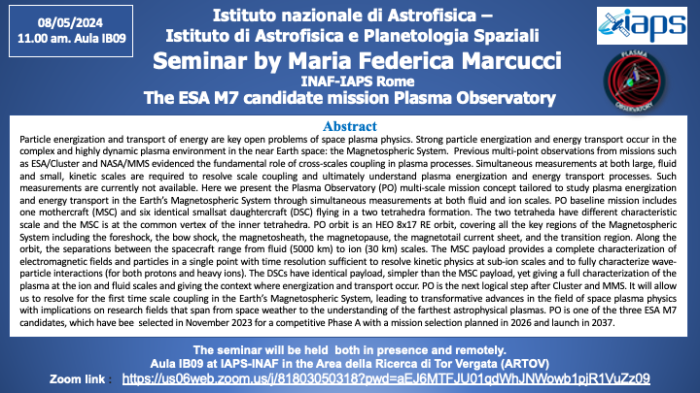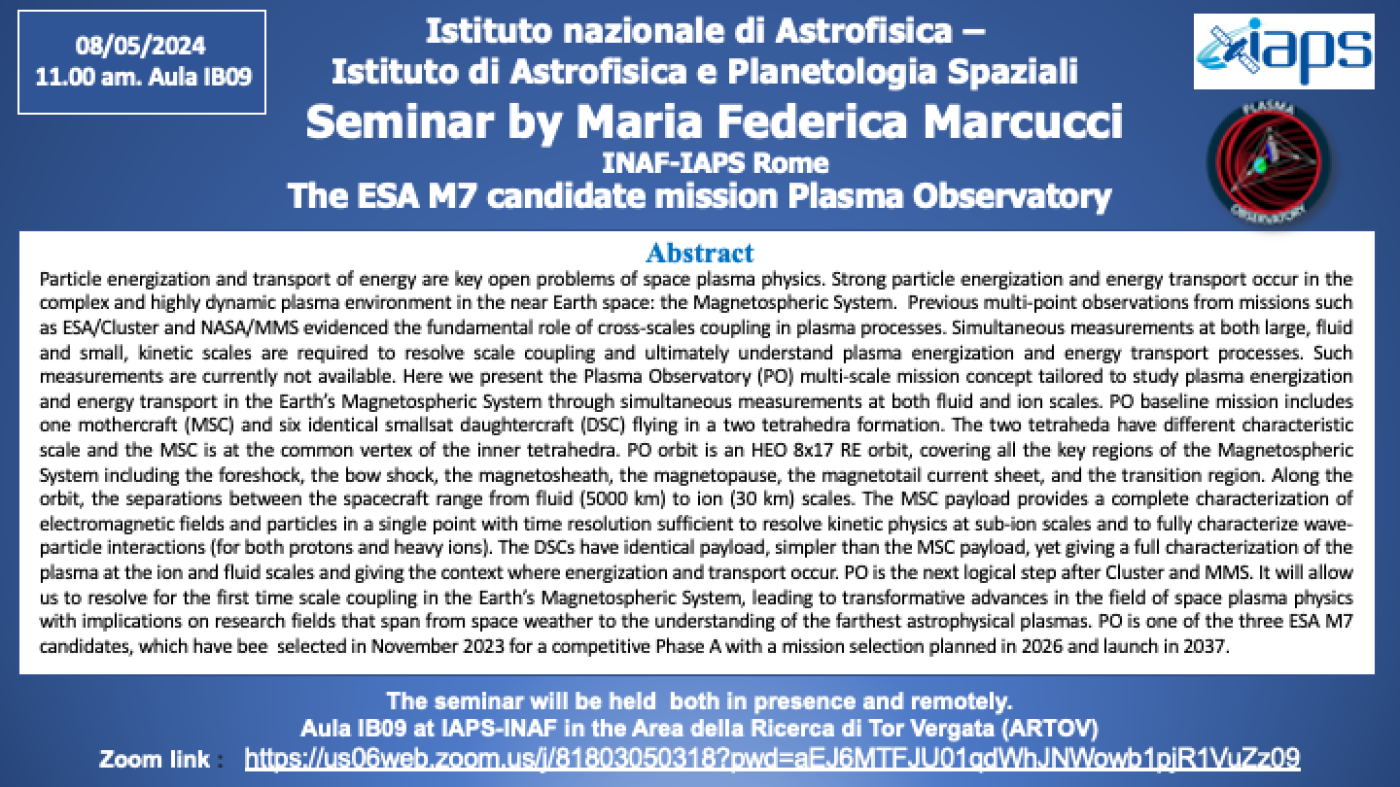The ESA M7 candidate mission Plasma Observatory
Affiliation: INAF-IAPS

Abstract: Particle energization and transport of energy are key open problems of space plasma physics. Strong particle energization and energy transport occur in the complex and highly dynamic plasma environment in the near Earth space: the Magnetospheric System. Previous multi-point observations from missions such as ESA/Cluster and NASA/MMS evidenced the fundamental role of cross-scales coupling in plasma processes. Simultaneous measurements at both large, fluid and small, kinetic scales are required to resolve scale coupling and ultimately understand plasma energization and energy transport processes. Such measurements are currently not available. Here we present the Plasma Observatory (PO) multi-scale mission concept tailored to study plasma energization and energy transport in the Earth’s Magnetospheric System through simultaneous measurements at both fluid and ion scales. PO baseline mission includes one mothercraft (MSC) and six identical smallsat daughtercraft (DSC) flying in a two tetrahedra formation. The two tetraheda have different characteristic scale and the MSC is at the common vertex of the inner tetrahedra. PO orbit is an HEO 8x17 RE orbit, covering all the key regions of the Magnetospheric System including the foreshock, the bow shock, the magnetosheath, the magnetopause, the magnetotail current sheet, and the transition region. Along the orbit, the separations between the spacecraft range from fluid (5000 km) to ion (30 km) scales. The MSC payload provides a complete characterization of electromagnetic fields and particles in a single point with time resolution sufficient to resolve kinetic physics at sub-ion scales and to fully characterize wave-particle interactions (for both protons and heavy ions). The DSCs have identical payload, simpler than the MSC payload, yet giving a full characterization of the plasma at the ion and fluid scales and giving the context where energization and transport occur. PO is the next logical step after Cluster and MMS. It will allow us to resolve for the first time scale coupling in the Earth’s Magnetospheric System, leading to transformative advances in the field of space plasma physics with implications on research fields that span from space weather to the understanding of the farthest astrophysical plasmas. PO is one of the three ESA M7 candidates, which have bee selected in November 2023 for a competitive Phase A with a mission selection planned in 2026 and launch in 2037.


